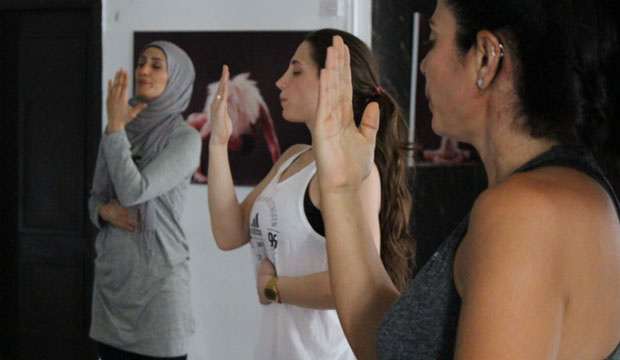Once we leave the fluid of our mother's womb we breathe in the air without much thought. Our body is equipped to take in oxygen, keeping us alive, while we continue our day. So if our body does all of the thinking and work without our attention, why is it so important to create a daily practice focused around breathing? Seems like a waste of time, huh?
Many of us have shallow breathing. This happens for various reasons but one is that we often live in survival mode. This state of being can create short and shallow breaths because we are not in a calm state of mind.
From a manifestation perspective; focusing on our breath allows us to connect with the life force that exists outside of us and inside of us. This increases intuition, the stillness of cluttered thoughts and 'foggy' mind. This stillness increases our patience to allow divine timing for manifestations to unfold.
The ancient Sages and Yogis referred to controlled breathing as Pranayama. Pranayama is a Sanskrit word that means breath control. The word Prana means life force. The life force in each of us is breath. Without breathing we would cease to live on earth. With that said, it's probably worth some daily attention.
There are various forms of Pranayama. Some include holding one nostril down at a time, while others may be to increase the 'fire' in the body or to simply take in deep controlled breaths while mindfully observing the action of inhalation and exhalation. Yogis began these practices thousands of years ago, today, science is catching up...
Ian Robertson, Co-Director of the Global Brain Health Institute at Trinity and Principal Investigator of the study says: "Yogis and Buddhist practitioners have long considered the breath an especially suitable object for meditation. It is believed that by observing the breath and regulating it in precise ways a practice known as pranayama changes in arousal, attention, and emotional control that can be of great benefit to the meditator are realised. Our research finds that there is evidence to support the view that there is a strong connection between breath-centred practices and steadiness of mind." Ian also went on to say that these breathing techniques also slow down the brain's ageing process. This means a reduced risk of dementia and strengthened brain networks.

Nirvana® is a perfect program for movers and shakers, pairing the art of breath control with the flow and movement to music. This system intrigued me so much that I decided to take the full course, it did not disappoint. I would like to share with you just a few key points that were my favorite about the Nirvana® curriculum.
- Music with theta wave technology
”Flow zone” brainwaves (alpha-theta border) gives you all the benefits of a flow state combined with other brainwaves creating a superconductive potential in all possible tasks and circumstances." (Nirvana Instructor Manual)
The science behind Nirvana® has shown to increase natural levels of dopamine, endorphins, anandamide, and oxytocin serotonin.
- Breakdown of breaths per minute
More than 12 breaths per minute is a sign of stress, anxiety and depression.
If you are in the 7 - 9 breaths per minute range, that is good.
An average of 4 breaths per minute is excellent. (Yeah, I was surprised too.)
Although it would take much more than one article to share with you all of the research and techniques to mindful breathing, I hope this has sparked enough curiosity to begin a daily practice and possibly learn more.
Article written by Dr. Melissa Carver

Connect with Melissa ...
Website -
Facebook -
InstagramSources:
Science daily and
Nirvana®Photo credits: Neha Saxena Bagga & Abir Abdul Reda
---
Read more about this:
> Download Cloud#7 for free to practice daily
> Find a Nirvana class
> The Science behind Nirvana